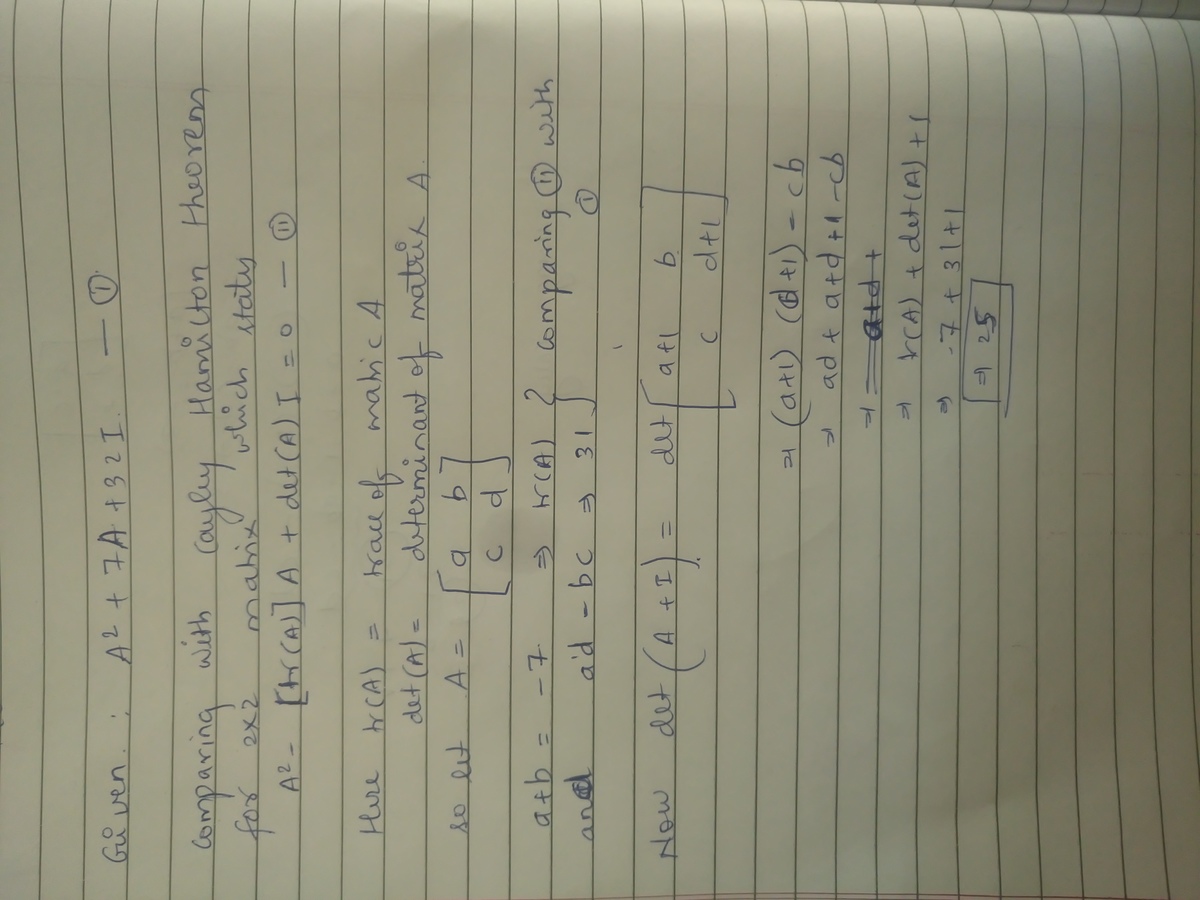4. An algebra problem by Sompong Chuisurichy
Let A be a 2 × 2 real matrix satisfying
A 2 + 7 A + 3 1 I = 0
where I is the identity matrix.
Find det ( A + I ) .
The answer is 25.
This section requires Javascript.
You are seeing this because something didn't load right. We suggest you, (a) try
refreshing the page, (b) enabling javascript if it is disabled on your browser and,
finally, (c)
loading the
non-javascript version of this page
. We're sorry about the hassle.
3 solutions
Some typing mistakes should be changed. Starting with "Dividing eq (2) by b or eq (3) by c we get, a + d + 7 = 0 . . . (5) "
Characteristic polynomial of A = x 2 + 7 x + 3 1 , to get the characteristic polynomial of A + I we transform the roots by putting y = x + 1 so x = y − 1 now the characteristic polynomial of A + I as ( y − 1 ) 2 + 7 ( y − 1 ) + 3 1 = y 2 + 5 y + 2 5 so d e t ( A + I ) = 2 5
 trick here is to use
Cayley Hamilton theorem
trick here is to use
Cayley Hamilton theorem
Let A = ( a c b d )
Then we get,
A 2 + 7 A + 3 1 I = ( a 2 + 7 a + b c + 3 1 c a + c d + 7 c a b + b d + 7 b d 2 + b c + 7 d + 3 1 ) = 0
so we have 4 equations,
a 2 + 7 a + b c + 3 1 = 0 ⋯ ( 1 )
a b + b d + 7 b = 0 ⋯ ( 2 )
c a + c d + 7 c = 0 ⋯ ( 3 )
d 2 + b c + 7 d + 3 1 = 0 ⋯ ( 4 )
Dividing eq (2) or eq (3) by c we get,
a + b + 7 = 0 ⋯ ( 5 )
Subtracting eq (4) from eq (1) we get,
a 2 − d 2 + 7 a − 7 d = ( a − d ) ( a + d + 7 ) = 0
⇒ a − d = 0
⇒ a = d
Substitute a = d in eq (5) we get,
a = d = − 2 7
Substitute value of a in eq (1) we get,
b c = − 4 7 5
Now,
d e t ( A + I ) = ( a + 1 ) ( d + 1 ) − b c = 2 5